Yad La-Shiryon, Latrun – Visitors Guide
Yad La-Shiryon, the armored corps memorial site and museum at Latrun is one of the most diverse tank museums in the world.
Table of Contents
Map
Yad La-Shiryon is located at Latrun. It is a strategic point overlooking all surrounding areas, including the Tel-Aviv – Jerusalem road.
Directions for drivers: Link to Waze and Link to Google Maps
Directions for public transport: Link to Moovit
Interactive map of the area:
Directions
You can take a bus to the Latrun junction and walk if you use public transport. Here is the preset link to Moovit, where you can set your origin and get updated directions.
And if you are reaching by car, enter “Yad La-Shiryon” into Waze or Google Maps, and you will get there. Also, there is plenty of free parking on site.
Opening Hours
Sunday – Thursday: 08:30 – 16:30
Friday and holiday eves: 08:30 – 13:00
Saturday and holidays: 09:00 – 16:30
Entrance Fee
Adult: 30 NIS
Child (5 – 15): 20 NIS
Family (2 Parents + minimum three kids aged 5 -15): 100 NIS
Note: opening hours, ticket prices, and discounts were updated in May 2022. In any case, recheck them at the official site before visiting.
Discounts and Coupons
If you have the Matmon card, in other words, if you have an annual membership to National Parks And Nature Reserves in Israel, then by presenting it, you will get a 20% discount. Another option to get 20% off is printing this coupon and showing it at the entrance.
And the entrance on Independence Day is usually free.
Introduction
Yad La-Shiryon is Israel’s official memorial site for fallen soldiers from the armored corps, as well as one of the most diverse tank museums in the world. The cornerstone for Yad La-Shiryon was laid on December 14, 1982.
The site was created through the initiative of veteran officers of the armored corps. The outdoor display includes 110 tanks and other armored fighting vehicles, both Israeli and captured enemy examples including the Merkava and T-34, T-54, T-55, T-62 tanks, as well as vehicles obtained or purchased from allied nations specifically for diversifying the collection like the German Leopard tank or the only T-72 on display in Israel. Other notable items include: an M4 Sherman tank mounted high atop a former British water tower. A collection of mobile bridges constructed by the IDF (Israeli Defense Forces) which can be carried by tanks and erected while under fire; captured enemy vehicles, most of which Israel has modified and updated. A tank with a blown up gun. And a long, engraved commemorative wall bearing the names of Armored Corps soldiers killed in defense of the country.
Source: Wikipedia
Independence Day at Yad La-Shiryon
Our last visit was on Independence Day of 2018. Yad La-Shiryon is active all year round. But during Independence Day, you can find additional exhibitions. We started with the Military engineering exhibition.
Note: keep in mind that you will see crowds and soldiers explaining the exhibits in these photos (since I took them during Independence Day celebrations). If you come on a regular day, there will be fewer people and no guides (or at least fewer guides).
Can you guess the wheel of which vehicle it is?
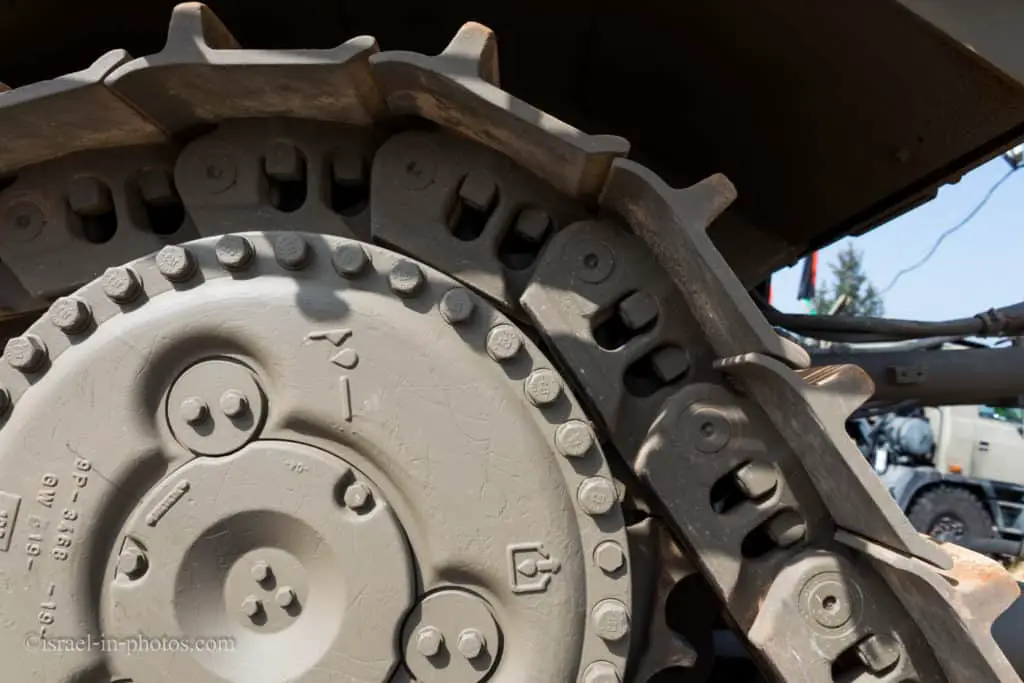
It is the massive caterpillar D9.
Beside every vehicle, there was an explanation stand in Hebrew. And guides told us about the exhibits and answered questions.
I asked why the top of this vehicle was covered with something that looked like small glued stones.

As it turns out, there are two reasons for it. The ease of climbing is the obvious one. But the main reason is camouflage. It is the exact opposite of cars. While you want your vehicle to stay clean, you want an infantry fighting vehicle to absorb the surrounding dust and dirt.
There were also sniper rifles, optics, and home front command. For example, a camera used to save people underground or under ruins (after an earthquake). The camera on the left can go 20 meters deep, and you see everything on the screen on the left.
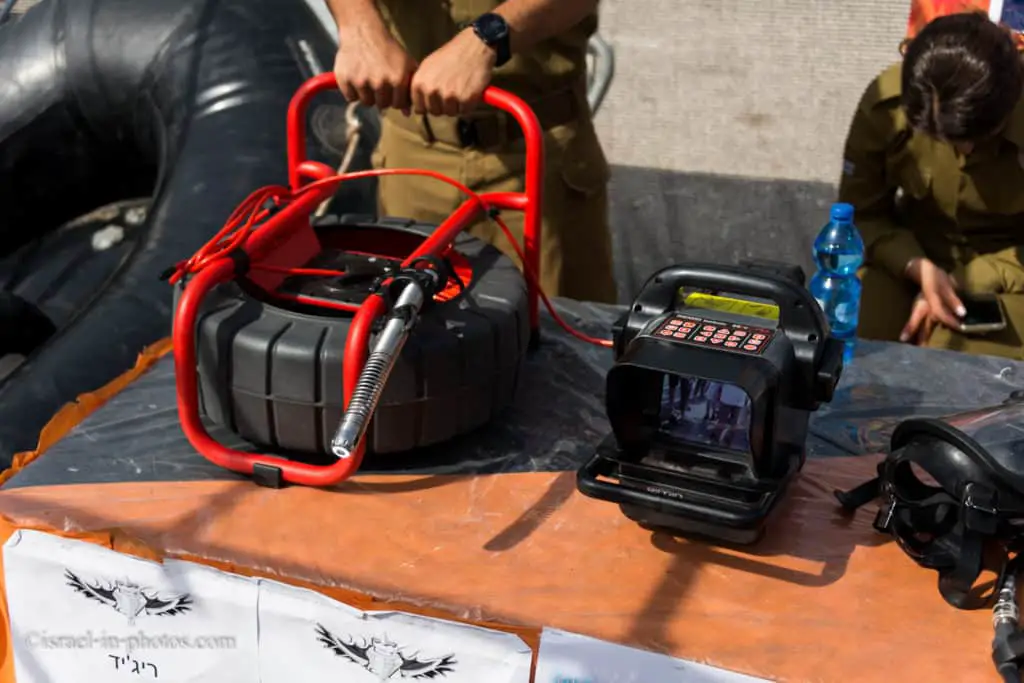
And these are the Artillery Corps:
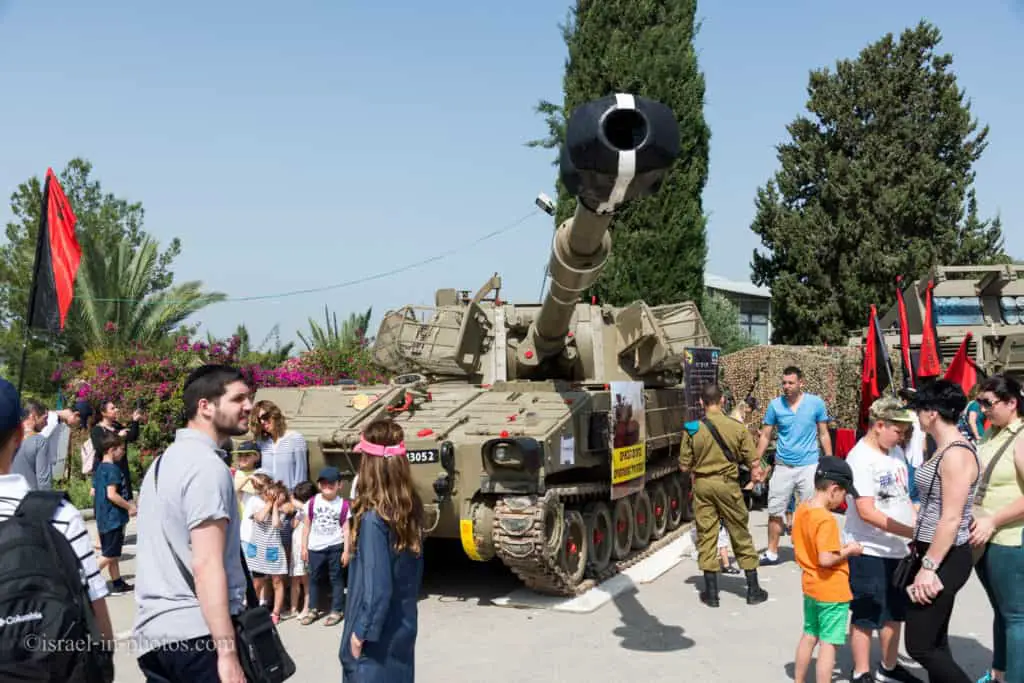
There were different small activities for kids. They included looking through various binoculars, climbing various vehicles, sitting in a Hummer, wearing helmets, and you could even getting disguised.
Regular Exhibitions at Yad La-Shiryon
Then we headed to the standard shows. As you can see, there were plenty of people, but we could visit everything with patience.
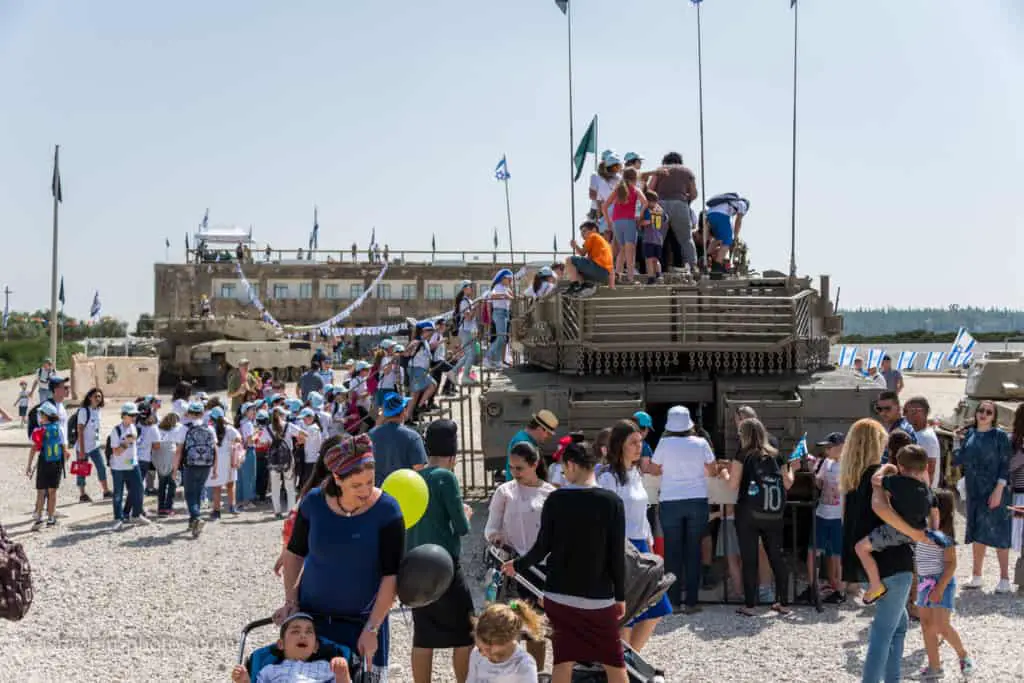
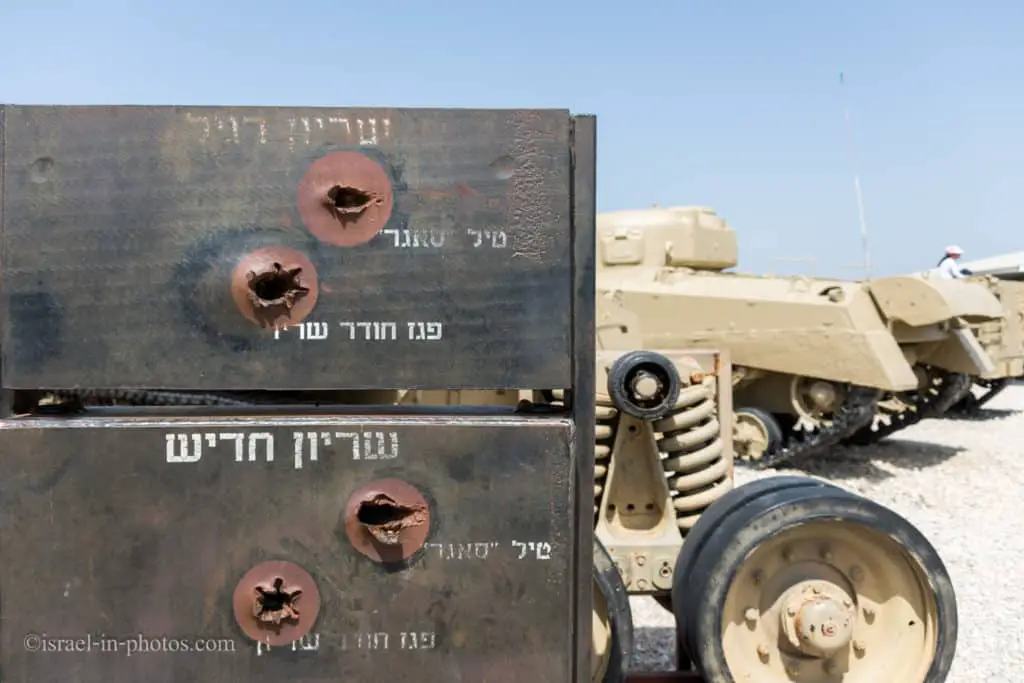
Here is a neat exposition. A tank was divided into two parts, so you can see its interior.
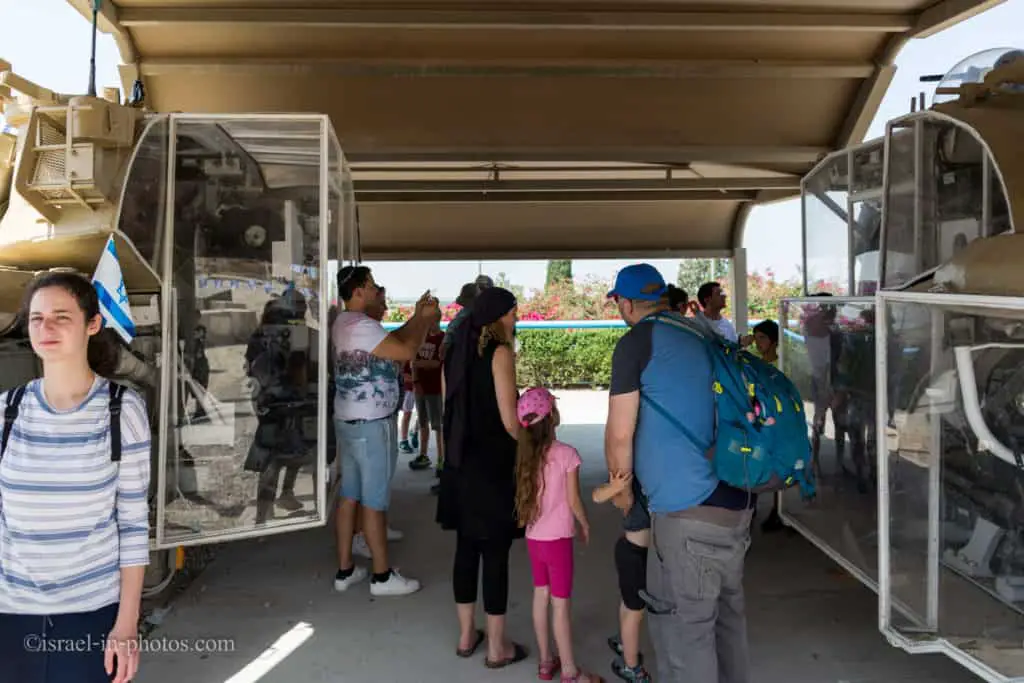
The main museum section of Yad La-Shiryon is the armored corps collection, with more than 160 tanks and armored personnel carriers surrounding the site, making Yad La-Shiryon the most diverse museum in the world.
The armored combat vehicles are divided into the following groups: armored vehicles that took part in Israel’s wars, armored corps that was captured and armored vehicles collection that belongs to different armies in the world. Beside each transport, there is a sign telling its primary technical data and historical background. Many tanks have unique stories.
Source: translated from the official site.
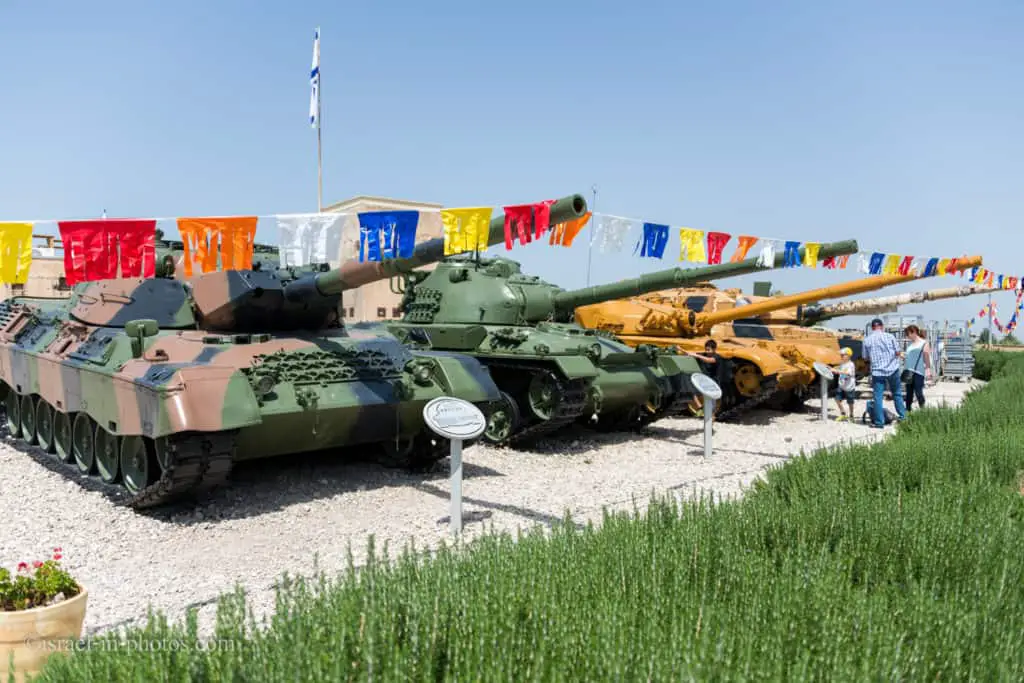
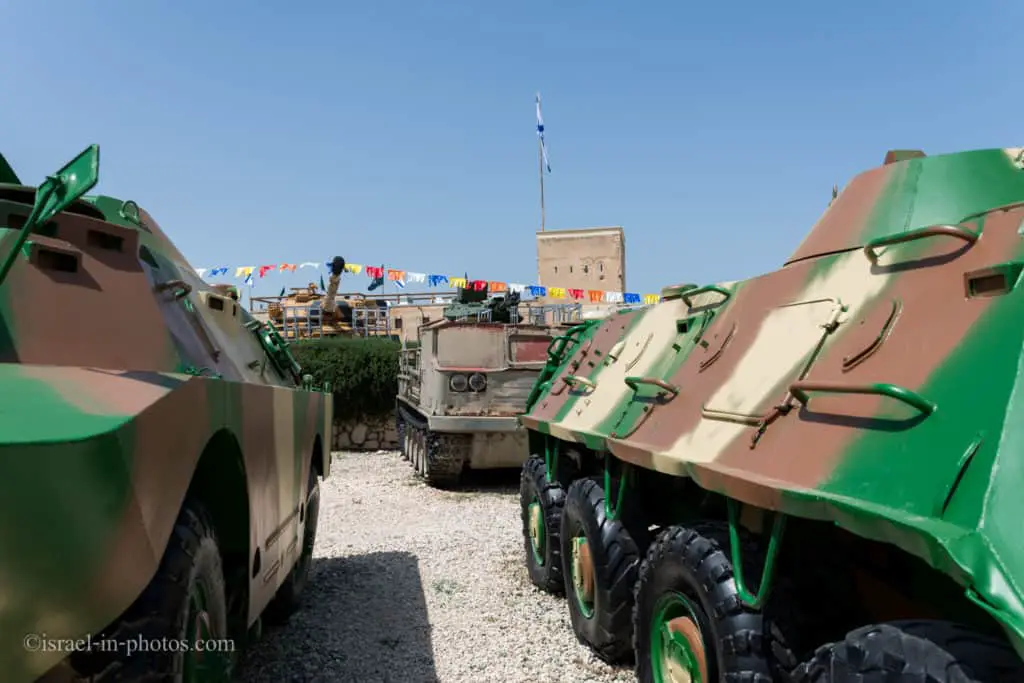
Tegart Fort
Then we headed to Tegart fort. It is located in the center at the highest point.
The main building, a Mandate-era Tegart fortress, houses a library with a publicly accessible computerized record of every fallen Israeli tank soldier, and a synagogue. The deeply pocked outer walls of the fort are a reminder of the building’s wartime past and its use by the Arab Legion. The tower of the fortress has been converted into a Tower of Tears by Israeli artist, Danny Karavan. The inside of the tower is covered by steel taken from a tank and water circulating from a pool underneath the installation trickles down the walls.
Source: Wikipedia
You can still see the sign of war on the building.

The forts are named after their designer, British police officer, and engineer Sir Charles Tegart.
Sir Charles Tegart designed the forts in 1938 based on his experiences in the Indian insurgency. They were built of reinforced concrete with water systems that would allow them to withstand a month-long siege.
Many of them can still be seen in Israel today, and continue to be used as police stations and jails.
Source: Wikipedia
We climbed to the top of the building. On the roof, you understand the importance of this place and why there were many wars there. Latrun hill allows an overview of surrounding valleys, including the road to Jerusalem, and on a clear day, you can even see Tel Aviv.
View from the roof includes a stand telling about Joshua Bin-Nun’s battle.
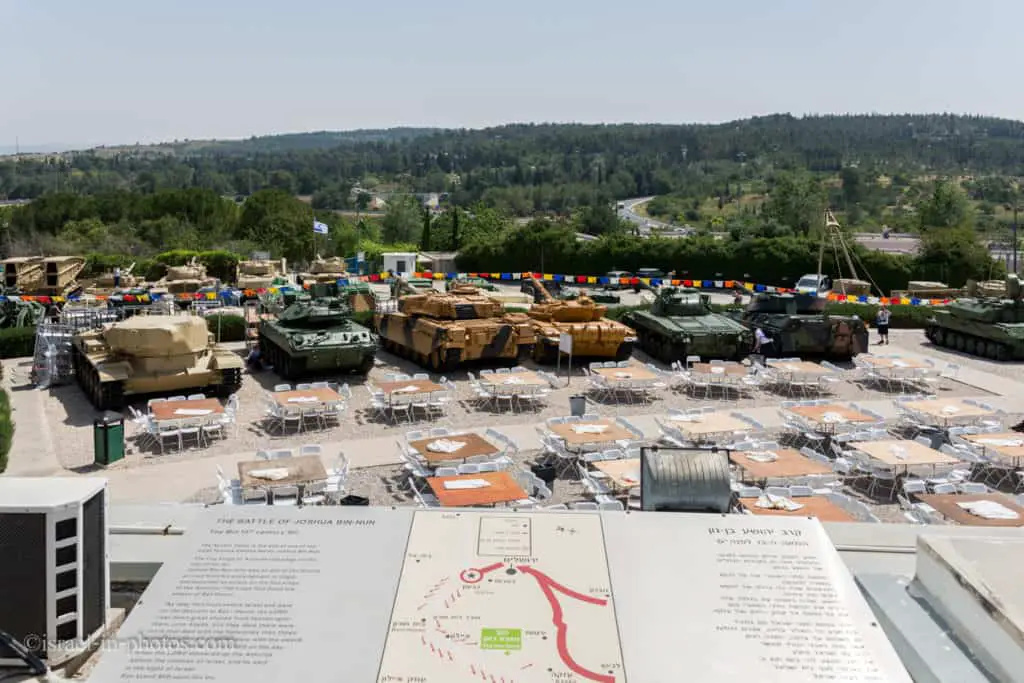
Sherman Tank on the Tower
The most famous sight at Yad La-Shiryon is most likely that of a tank on top of a tower, which serves as the museum’s logo. In 1979, by the decision of late Major General (Ret.) Moshe Peled, the tank was hoisted on top of a tower on the site, which was originally used as a water tower. The tank that was chosen is an American M4 Sherman, one of the first tanks that fought in the service of the Israel Defense Forces. Since the water tower was only designed to support 25 tons and the tank weighed 34 tons, both the engine and transmission gears had to be removed.
Source: Wikipedia
Sherman tank on the tower and Latrun Monastery.
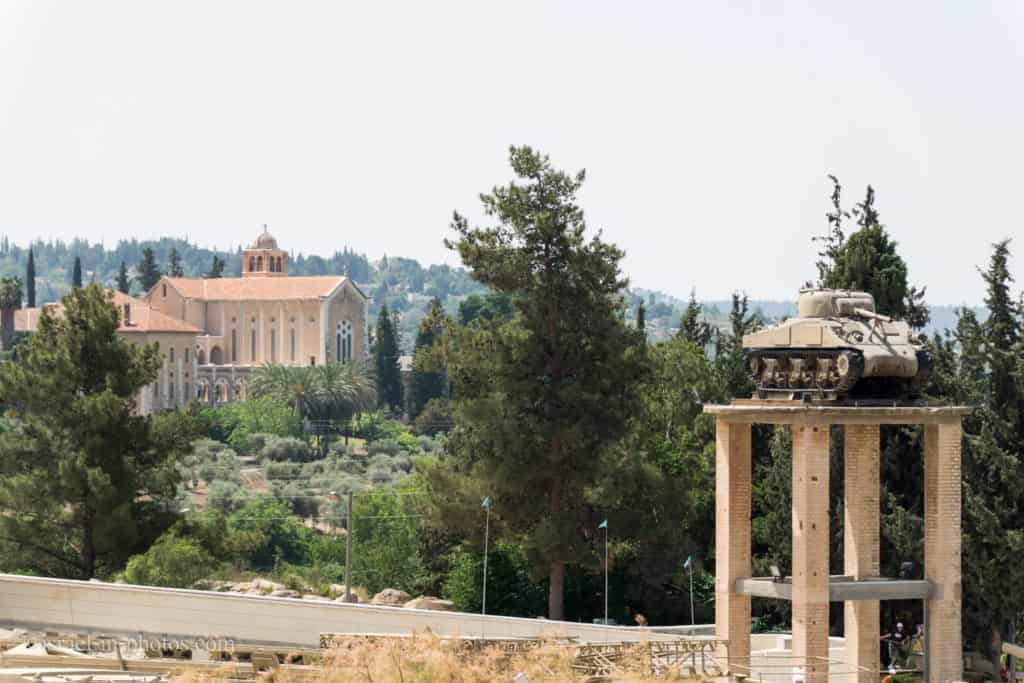
Another view from the roof:

We checked the museum inside the Latrun police station, but they divided the entrance into slots due to the number of people. We decided not to wait twenty minutes to see the movie and the exhibits and headed home.
Israel Defense Forces History Museum
The Museum of the IDF History is located in the Neve Tzedek neighborhood, near HaTachana Compound in Tel Aviv. This experiential museum tells the story from the time of the British Mandate until modern times.
Well, I should say that it was located in Tel Aviv since, according to the official site, the Israel Defense Forces History Museum was closed on 1.1.2019. And the exhibits will be moved to Latrun within the next two years. So expect additional displays at Yad La-Shiryon soon.
Latrun Attractions
Here is the list of other nearby attractions in the Latrun area:
- Mini Israel is a miniature park. And according to the official site, it “features over 385 beautifully crafted replica models of Israel’s most important historical, religious, archaeological and modern sites, at a scale of 1:25, including 25,000 7cm high miniature residents within the models themselves”.
- Latrun Monastery is the only Trappist monastery in Israel.
- Ayalon-Canada Park near Latrun junction offers nature, hiking tracks, cycling trails, places for a picnic, viewpoints, and ruins from various periods.
- Emmaus Nicopolis was the Roman name for one of the towns associated with the Emmaus of the New Testament, where Jesus is said to have appeared after his death and resurrection. Emmaus was the seat of the Roman Emmaus. In contrast, Nicopolis was the city’s name from the 3rd century CE until Palestine’s conquest by the Rashidun Caliphate’s Muslim forces in 639. In the modern age, the site was the location of the Palestinian Arab village of Imwas, near the Latrun junction, between Jerusalem and Tel Aviv, before its destruction in 1967. The site today is inside Canada Park, a place maintained by the Israel Nature and Parks Authority. However, the archaeological site has been cared for by a resident French Catholic community since 1993. (source).
And you can combine several attractions for an adventure.
Summary
We spent almost three hours and Yad La-Shiryon, and the best part was leaving. No, I do not mean that it was awful. It was lovely. We enjoyed the visit. After spending several hours trying to exit the Ramat David Airforce Base parking lot, I was delighted when it took us less than five minutes to leave the parking lot near Yad La-Shiryon (read about that Independence Day experience). Moreover, there are many things that kids can touch and climb on at this site. Thus if you are wondering which one you should visit, Ramat David or Latrun, I would recommend Yad La-Shiryon.
Have you ever been to Yad La-Shiryon? Tell us about your experience in the comments below.
That’s all for today, and I’ll see you in future travels!
Stay Tuned!
Additional Resources
Here are several resources that I created to help travelers:- Trip Planner with Attractions and Itineraries is the page that will help you create your perfect travel route.
- What is the Best Time to visit Israel? To answer this question, we will consider the weather, prices, holidays, festivals, and more.
- Information and Tips for Tourists to Israel will answer the most common questions tourists have about Israel (including safety, passports, weather, currency, tipping, electricity, and much more).
- Israel National Parks and Nature Reserves include a complete list, top ten, map, tickets (Israel Pass, Matmon, combo), and campsites.
- If you are looking for things to do, here are the pages for Jerusalem, Tel Aviv, Haifa, Sea Of Galilee, Akko (Acre), Eilat, Nazareth, Safed (Tzfat), and Makhtesh Ramon.








Can I get a guided tour of latrun
I guess you are referring to a tour at Yad La-Shiryon. I never saw or participated in guided tours there. Thus I am not familiar with it. But here are their contact details (including emails): https://yadlashiryon.com/eng/contact-us/
Do you have a library to which one may contribute books given that at 81 my son will not be interested in my military shelf?
If you are not interested does the staff college have an interested library?
Hi,
Here is the contact information for Yad La-Shiryon:
https://yadlashiryon.com/eng/contact-us/